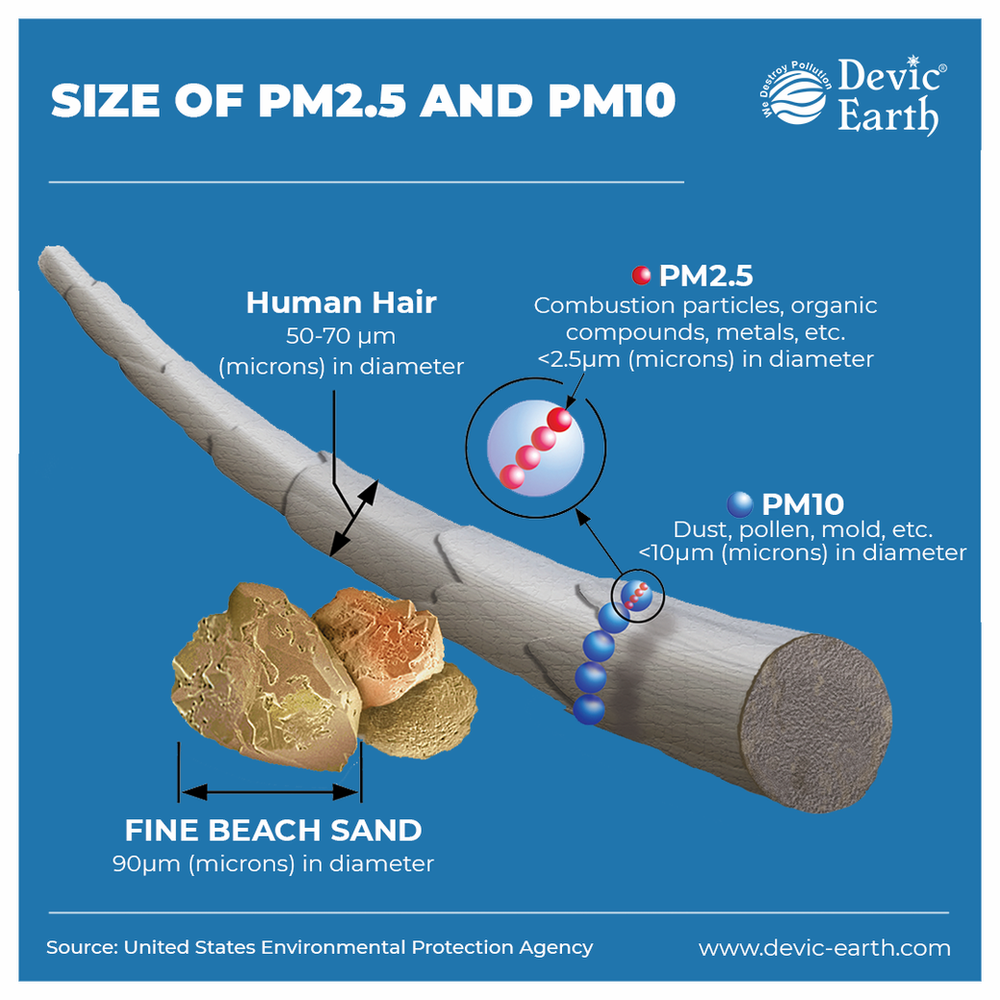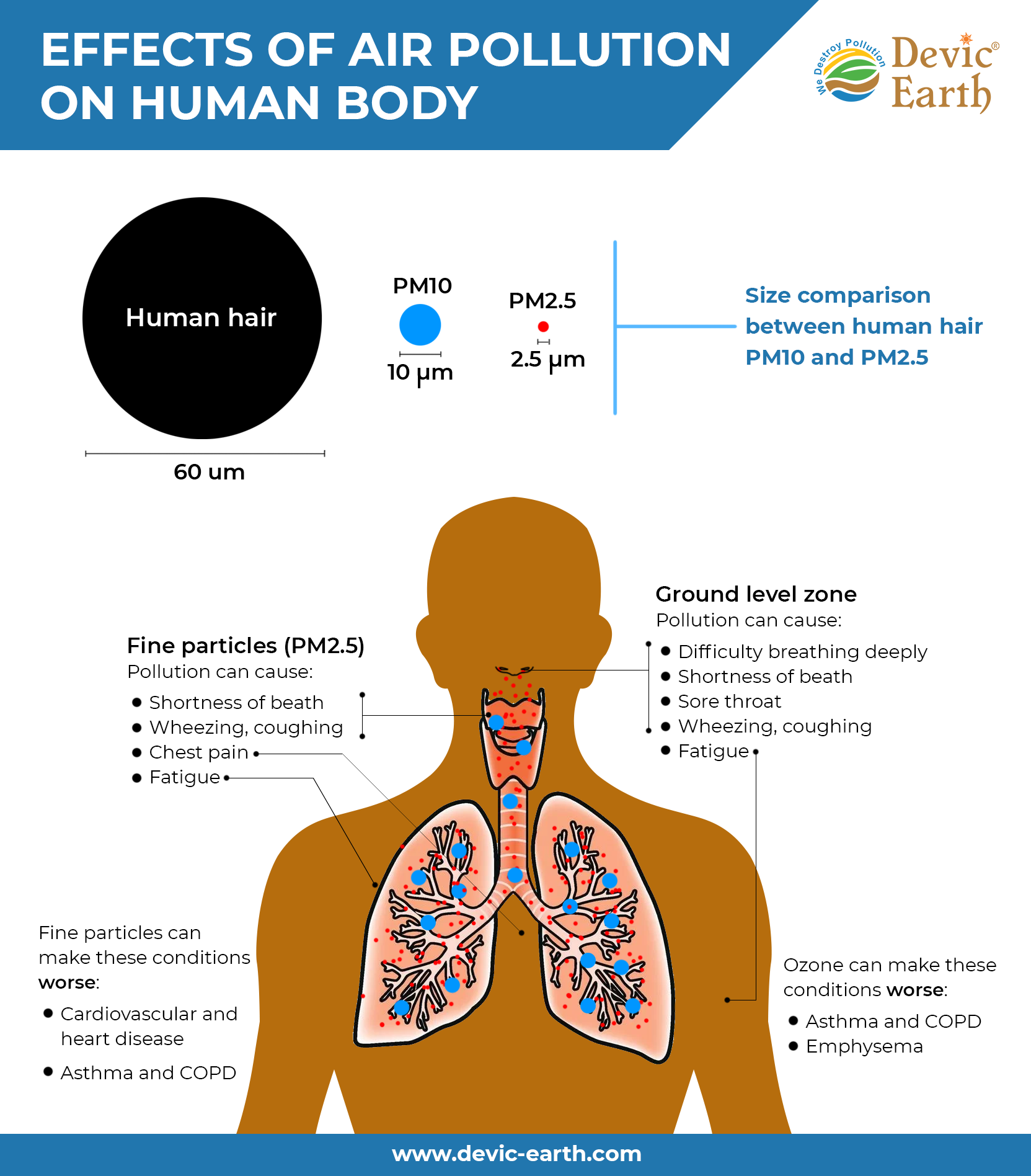What are PM2.5 and PM10? How They Affect You and Solutions
.jpg?width=880&name=file-Jul-15-2021-08-49-51-48-AM%20(1).jpg)
What is pm? The Particulate Matter definition or PM, in simple words, refers to small particles of dust. All of us are aware of how frustrating it can be to deal with dust, especially in very polluted cities. The floor, ceiling, windows, sheets among other surfaces need to be constantly wiped, not to mention the care our own bodies require.
If this is how much work needs to be done on the outside, can you imagine how much more complex safeguarding our internal health from dust is? This article gives an overview of types of particulate matter, pm10 vs pm2 5, and pointers on how to protect ourselves from it.
The visible dust that we see around us can be filtered in our nostrils, accumulating with the mucus. It is therefore easily washable. The problem is with microscopic dust particles that are not visible to the naked eye.
PM size like or PM2.5 and PM10 are not visible to the naked eye. It can enter the body easily and cause damage.
Difference Between PM 2.5 and PM 10 - PM 10 vs PM 2 5
Particulate matter is extremely small in comparison to visible matter such as fine sand, human hair, etc. Dust particles are graded by measuring their diameter in microns.
The most important types of particulate matter are PM2.5 and PM10 from a public health perspective. PM2.5 vs PM10, both are microscopic in size, as illustrated below:

The unit used to measure the diametrical thickness of particulate matter is the micron. An average human hair is 50-70 microns thick, while a particle of fine beach sand is 90 microns thick.
In comparison, the said particulate matter is either a) 10 microns or lesser in diameter, or b) PM2.5 microns or lesser. This means that they can enter our body easily through the nostrils, escaping their filtration process as they are small enough to get past it. So, seeing that, pm2 5 health effects are much more worse than PM10
How is PM formed?
Particulate matter is composed of a mixture of solids and liquids found in the air. It comprises dust, dirt, soot, etc. Particulate matter is released in the course of action both natural and anthropogenic (human-caused).
Some of the activities commonly occurring in nature from time to time that cause particulate emissions include pollination, forest fires, sandstorms, volcanic eruptions, etc. The clear majority of PM emissions is human-caused, due to i) industrial activity, ii) combustion - of solid waste, biomass fuel for cooking, etc. iii) transportation, iv) resuspension of dust from roads, and so on. Sometimes, PM is also formed in the atmosphere by the chemical reaction of different gases emitted by industries and vehicles, such as sulphur and nitrous oxides.
PM2.5 and PM10 are released by various processes such as heavy manufacturing, combustion, construction sites, roadways, fires and other industrial activities.
How do PM2.5 and PM10 Affect the Human Body?

Particulate matter can cause serious disruption to the lungs by damaging their outer layer. This makes the lungs far more sensitive and vulnerable to damage, increasing the severity of diseases such as COVID.
Research in epidemiology shows that cities with particularly high levels of PM emissions show common recurrences of respiratory problems and associated health risks.
Further, PM2.5 vs PM10, both can also get into the bloodstream and pose severe health risks such as asthma, bronchitis and heart disease, in addition to short-term problems like lung and nose irritation, wheezing, irritation of eyes, etc.
If the body is constantly exposed to particulate matter, these conditions could accelerate in severity and lead to other chronic problems. Additionally, they magnify the severity of existing health problems.
Exposure to high levels of particulate matter can even lead to anemia in children.
What is the Solution?
The first step, undoubtedly, is to enhance pmi air quality by reducing air pollution at the source. What are the ways in which this can be achieved?
- Using cleaner burning fuels, and whenever possible, renewable energy in place of fossil fuels
- Improving ways of managing solid waste
- Constructing asphalt roads to prevent resuspension of dust
- Reducing pollution at industries by increasing sustainability measures
- Switching to electric vehicles to bring down vehicular emissions
Because of the rapid pace of urbanization and industrialization, we need to address, as a last resort, technology as a solution to improve air quality.
Industries and other polluted spaces must compulsorily have in place pollution control equipment. Policy should require a constant monitoring of pollution levels in industrial and other polluted areas and ensure that air pollution control technology is installed. This technology should be:
- Large-scale
- Affordable
- Hassle-free and easy to maintain
- Demonstrate high efficacy
At Devic Earth, we constantly work towards technological changes that offer innovative and effective solutions to environmental pollution. Our flagship product Pure Skies is one of the best solutions to controlling ambient air pollution over large spaces.
If your industry or society is interested in knowing how our technology can mitigate PM at your premises and enhance your quality of work and life, book a free consultation with us.
Have You Read?
https://www.sciencedirect.com/topics/earth-and-planetary-sciences/particulate-matter
https://www.greenfacts.org/en/particulate-matter-pm/level-2/01-presentation.htm

.svg)
.webp?width=1080&height=1080&name=Free%20Case%20Study%20Steel%20Plant%20(1).webp)







Post Comments